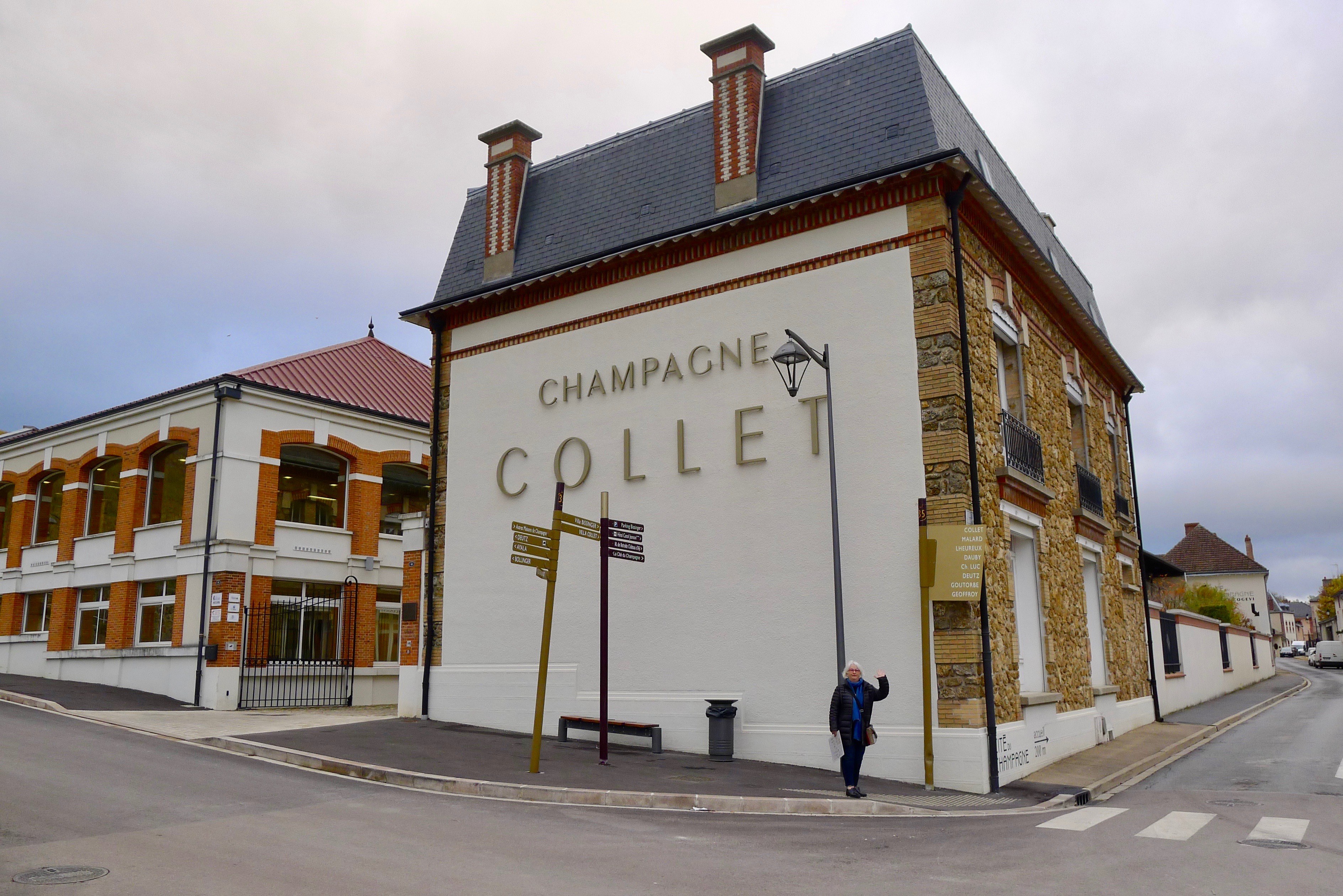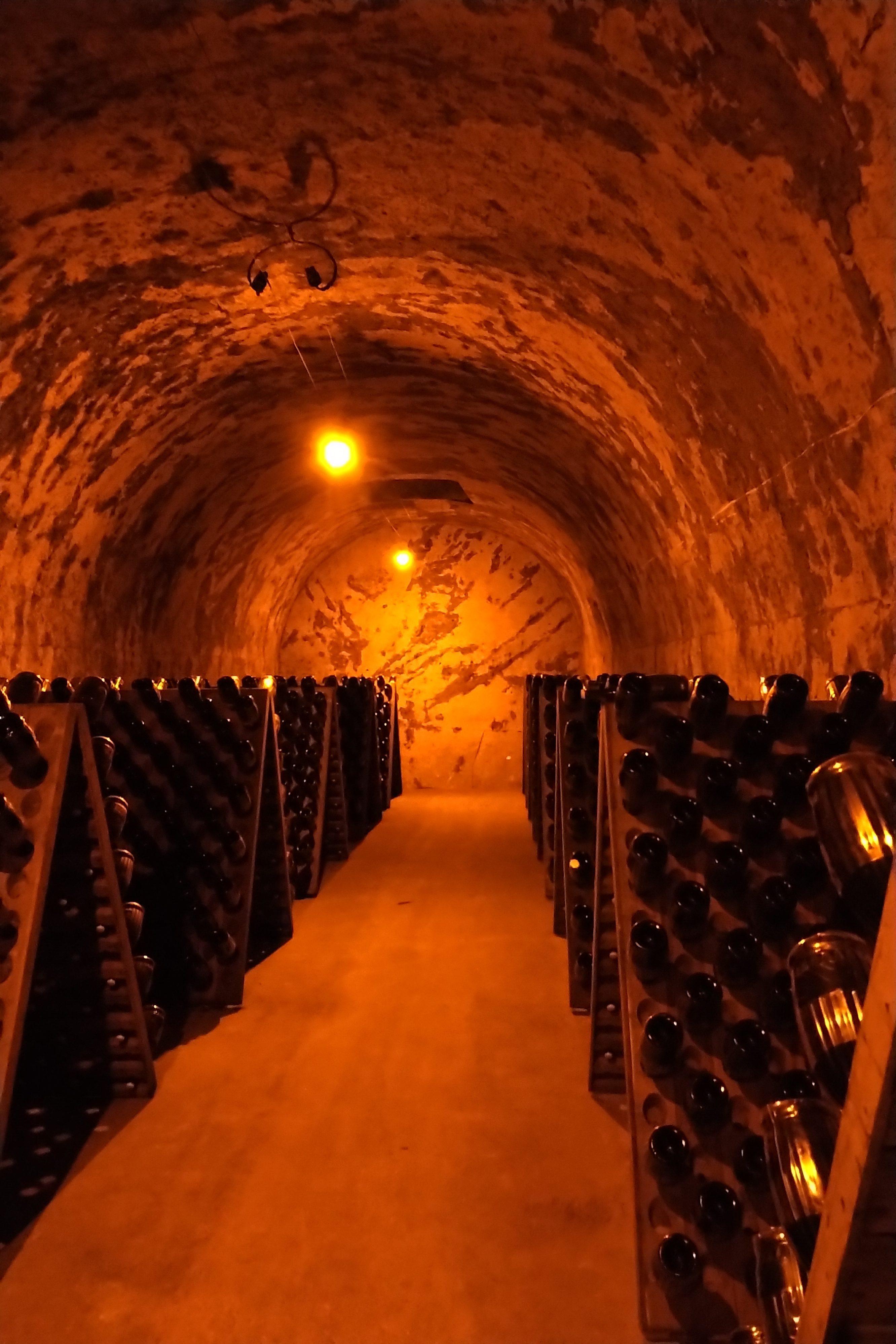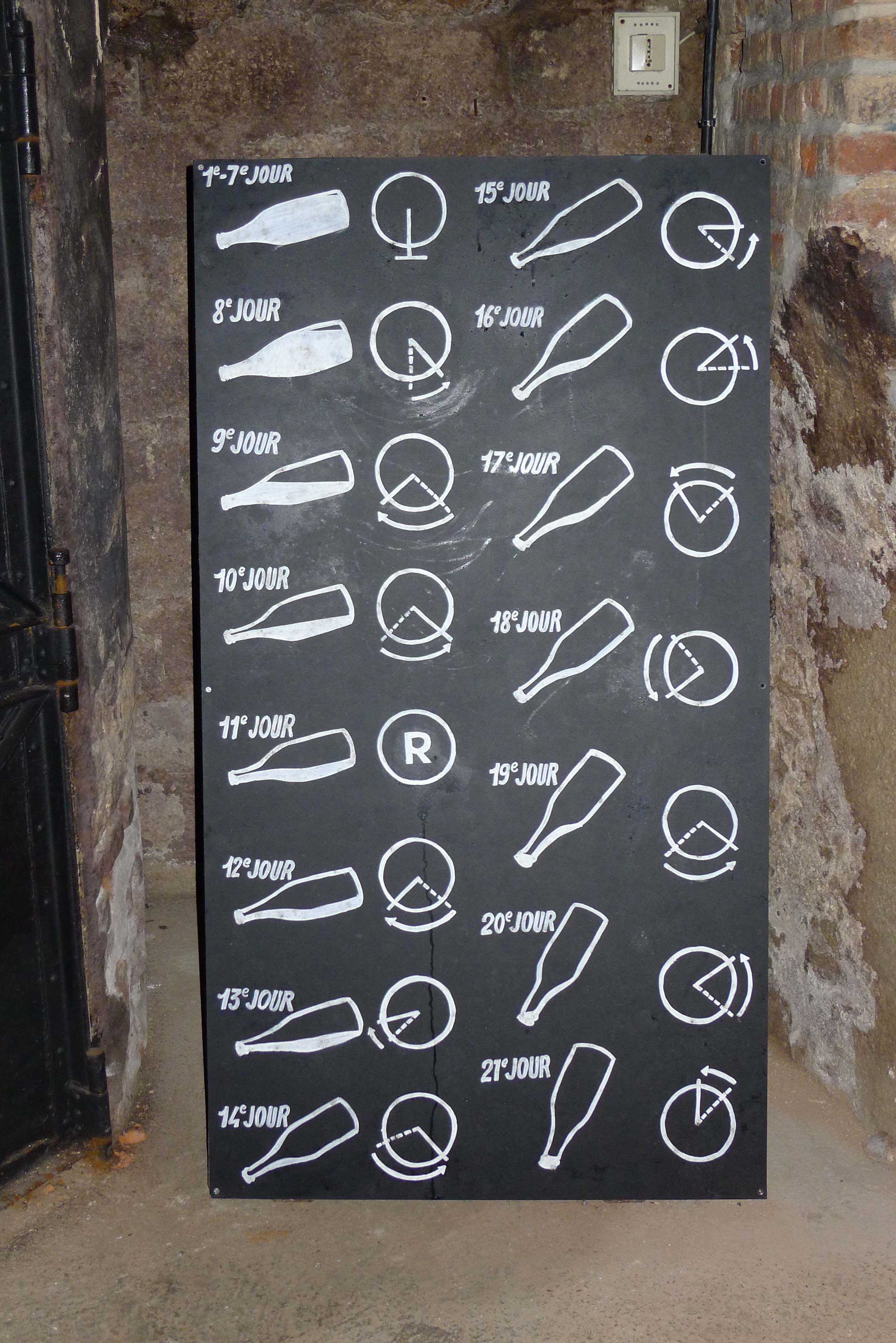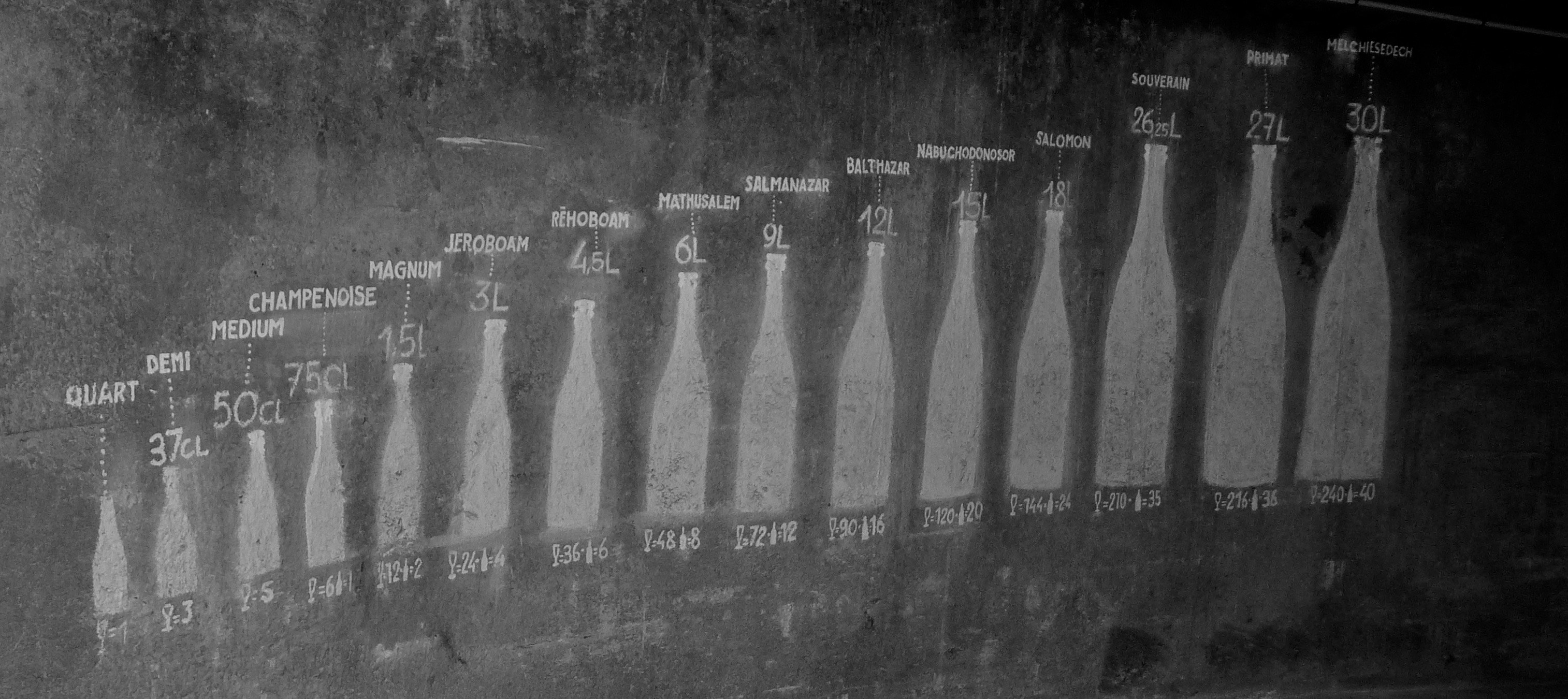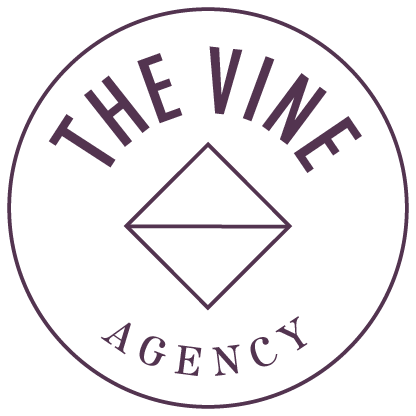CHAMPAGNE COLLET, Aÿ
As the flagship of the oldest cooperative in Champagne (COGEVI), Champagne Collet’s history harkens back to the ‘Revolt Champenoise’ that began in 1911. Motivated by rampant production of fraudulent Champagne, the revolt included 6,000 wineries, and ultimately resulted in the establishment of Champagne as an appellation, defining the boundaries and regulations for the region. The village of Aÿ was at the heart of the revolt, and many buildings were burned, including the Bissinger house, which today is home to ‘La Maison COGEVI’, a museum & archive dedicated to Champagne Collet and COGEVI. Raoul Collet was one of the founders of the cooperative, which began with 181 members.
Champagne Collet was founded in 1921. It is located in the heart of Aÿ, one of Champagne’s 17 Grand Cru villages, and a UNESCO World Heritage Site within the Vallée de la Marne growing region, notable for Pinot Noir.
The boutique house of Champagne Collet creates regionally distinctive champagnes that are centered in gastronomy – champagnes of character, with a view to satisfying connoisseurs who are looking for authenticity, elegance and a great finesse. Collet has the unique benefit of being able to select the best from COGEVI’s 850 member-growers and approximately 1,000 hectares of vineyards in 160 different crus (there are a total of 320 crus in Champagne). Winemaker Sebastien Walasiak uses no more than 10% of the overall vineyard yields to produce the best possible champagnes with year-to-year stylistic consistency. More than 250 ha of these vineyards are Grand Cru and Premier Cru – the best rated villages with the highest quality grapes. The remaining grapes and/or wine are sold to the larger negociants. For reference, there are now approximately 18,000 growers in Champagne (totalling 34,000 ha), and the largest cooperative, Nicholas Feuillette, has about 5,500 members. Other important co-operatives in Champagne include Henriot, Deutz and Laurent-Perrier.
From the beginning, Champagne Collet has identified itself with the Art Deco period that became popular in France after the First World War. The creative wave unleashed by the Art Deco style was the perfect accompaniment to the joy and abandon of life in the 1920s and remains part of the attraction to Champagne in the present day.
Champagne Collet Brut ‘Art Deco’ is 40% Chardonnay, 40% Pinot Noir, 20% Pinot Meunier and aged for a minimum of four years. Blanc de Blancs is a generous and supple champagne, made of 100% Chardonnay from six crus, the majority of which are in the renowned Côte des Blancs region. These impressive wines are aged on their lees for a minimum of four years. Collet uses only First Press juice (3 presses, or tailles, are permitted).
The grapes are gently pressed at stations in each vineyard within one hour of being hand harvested so that the clarity of the must is not compromised. Next, an indigenous, natural primary fermentation takes place at the winery. Sebastien blends the resulting base wines of the classic Champagne varieties from hundreds of individual vineyards and several vintages – vital, because blending is the ultimate art of Champagne and is the key to maintaining Champagne Collet’s incomparable house style. The cuvées are bottled with a bit of sugar and yeast for the second fermentation, or ‘prise de mousse.’ After disgorgement, the bottles are aged far beyond the minimum requirement in the winery’s 100-year-old chalk cellars resulting in softer wines needing less dosage. Some cuvées are matured in barrels from oaks grown in the appellation.
Some interesting Champagne facts:
- 18,000 growers
- 34,000 hectares in 320 villages, including;
- 17 Grand Cru Villages
- 42 1er Cru Villages
- Villages are rated, not individual vineyards
Yield is regulated for all Champagne (without respect to quality or price) – 4,000 kilos of grapes must produce 25.5 hectolitres of wine for the first press. Three presses are permitted (of declining quality).
What are you buying? All Champagne producers include their registration code on each bottle, which identifies the type of producer:
- CM – Coopérative Manipulant – A wine co-op that markets Champagne made from members’ grapes.
- RM – Récoltant Manipulant – A grower who makes and markets Champagne under their own label, from grapes exclusively sourced from their own vineyards and processed on their own premises. (aka Grower Champagne)
- RC – Récoltant Coopérateur – A cooperative-grower who markets co-op produced Champagne under their own label.
- NM – Négociant Manipulant – A person or legal entity that buys grapes, grape must or wine to make Champagne on their own premises and market it under their own label. All of the big Champagne Houses belong in this category.
- MA – Marque d’Acheteur – An ‘own brand’ wine label produced exclusively for one client (supermarket, celebrity or other).
